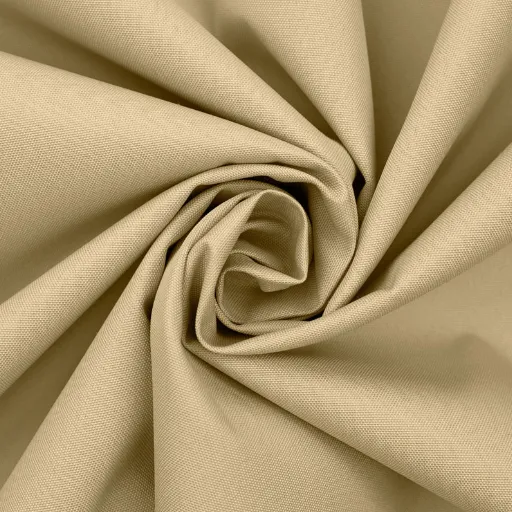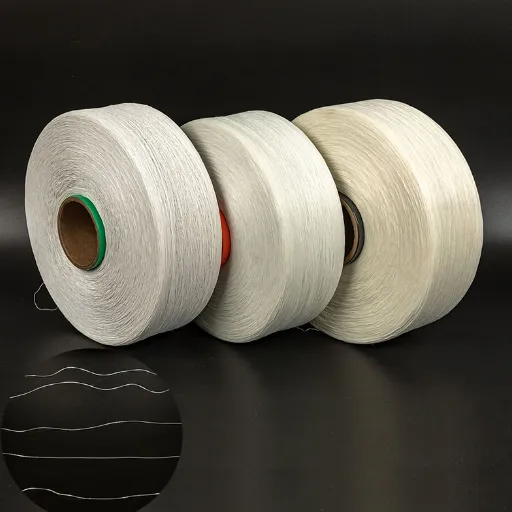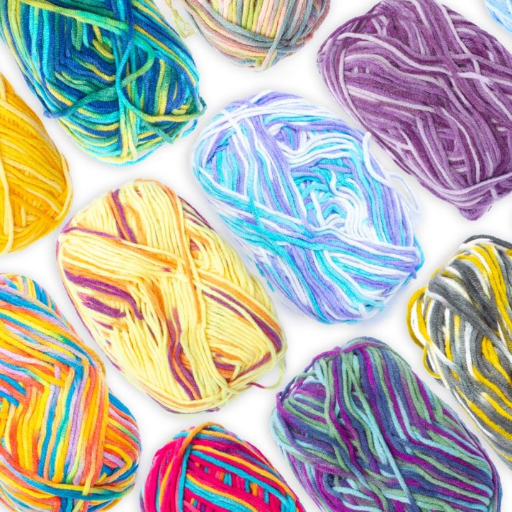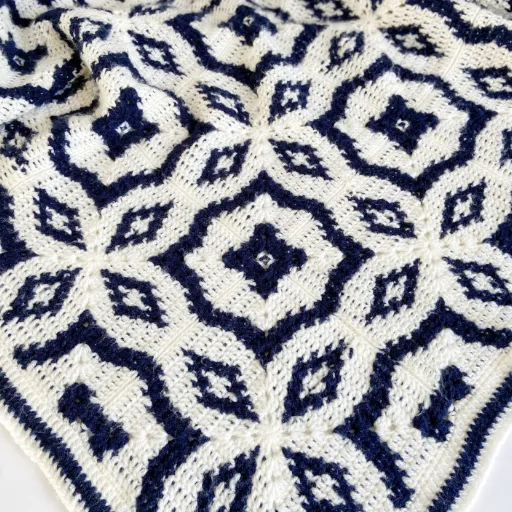Polyester and acrylic are the two most popular materials in synthetics. They are different yet alike, and each one has its own characteristics and uses. So what are the differences? For anyone interested in fabrics, whether for designing clothes, crafting, or simply choosing a lovely, warm blanket, knowing about these two materials can really help. This article provides an in-depth look at the key differences between polyester and acrylic by analyzing their features, advantages, and ideal applications. The differences in durability, softness, affordability, and sustainability, among other things, will be laid out for you to see so that you can make an informed decision. In case you are the one selecting the best yarn for your next project or just want to know more about synthetic textiles, this guide will be your help.
Composition and Manufacturing Process
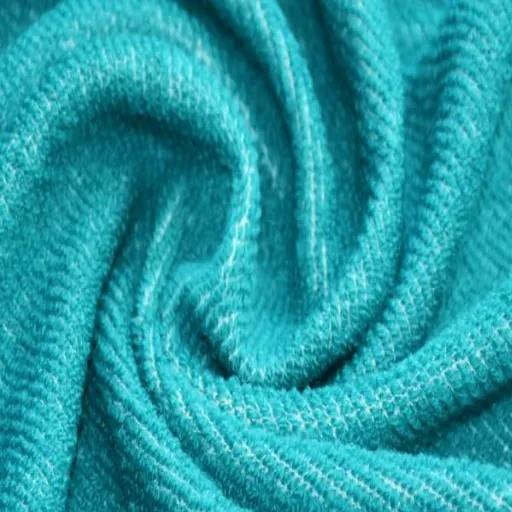
Polyester is a man-made fabric created by altering the state of a chemical reaction, primarily using petroleum-derived chemicals like ethylene glycol and terephthalic acid as basic raw materials. The chemical reaction gives the desired polyesters in the form of long chains, which are then drawn into thinner strands (wires). It is associated with the qualities of strength, elongation, and resistance to extreme conditions and abrasions.
Acrylic, on the other hand, is also a synthetic fiber made from a polymer called polyacrylonitrile, which is produced using petrochemicals. The fibers are created by dissolving the polymer in a solvent and spinning it into filaments. Acrylic is valued for its softness, wool-like feel, and ability to retain colors.
Both materials depend on mass production methods that modify and/or purify raw chemicals into adaptable fibers suitable for countless applications.
Understanding Acrylic Yarn
Acrylic yarn is not only relatively cheap but also very versatile and easy to maintain, which has led to its increased popularity. Besides offering a budget-friendly alternative to wool or cotton for both crafters and manufacturers, acrylic yarn is still robust and durable. Its lightness, along with the fact that it does not wrinkle, shrink, or get eaten up by moths, makes it suitable for clothes, blankets, and interior decoration.
Moreover, the long-lasting, bright colors of acrylic yarn add to the visual appeal of the finished products even after a long time. All these traits, along with the fact that they come in different textures and weights, make acrylic yarn a widespread choice in the modern crafting and textile industries.
Exploring Polyester Yarn
Polyester yarn is a man-made fiber that has become very popular due to its durability, low price, and versatility. The process of making this yarn involves the chemical reaction of purified terephthalic acid (PTA) and monoethylene glycol (MEG) that produces long, strong fibers. The most notable feature of polyester yarn is its exceptional durability to sweat, stains, and stretching, which opens up a wide range of applications such as sportswear, upholstery, and outdoor fabrics.
The combination of its light weight and high strength provides manufacturers the opportunity to produce long-lived products that will not lose their shape and quality over time. Also, polyester yarn can be mixed with other fibers like cotton to bring softness and performance to the final product while still keeping its strong, easy-care nature.
Durability and Performance
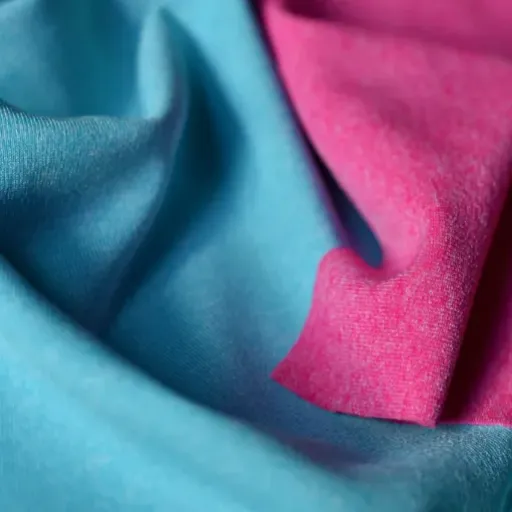
Durability and performance are the main characteristics of polyester and acrylic, which is why they are used across different industries. Among the many benefits of polyester, its resistance to shrinking, stretching, and wrinkling is the main reason manufacturers prefer it. Polyesters also dry quickly and are less likely to suffer from problems caused by moisture.
Acrylic, in contrast, is considered the best of the best for its featherweight and velvety texture, and it is also highly resistant to wear, sunlight, and harsh weather. Both fibers are similar in that they are easy to clean, resist color loss, and are therefore practical and aesthetically pleasing in their applications.
Acrylic vs. Polyester: Texture and Wearability
When one weighs acrylic against polyester regarding texture and wearability, the decision almost always comes down to the purpose of the item and the user’s personal taste. Acrylic is a winter-friendly fiber that is very soft, warm, and cozy, similar to wool, making it a go-to for sweaters, hats, and blankets in cold places. It is almost like having the natural fibers’ texture with the added benefit of being light and warm. Meanwhile, polyester is a superior quality with a smooth finish, being very non-stretchable and non-wrinkling, making it perfect for activewear, outdoor gear, and everyday clothing.
Acrylic and polyester are both versatile materials, but acrylic primarily points to comfort and warmth, while polyester is usually chosen for its durability and ease of maintenance. The characteristics mentioned above can help users find their perfect product by making well-informed decisions based on their specific needs.
Moisture Management in Fabrics
Polyester and acrylic materials have specific characteristics regarding moisture management, which will affect their use in different situations. One of the main reasons why polyester is so popular is its excellent moisture-wicking ability. Polyester is hydrophobic, meaning it does not absorb water. As a result, the sweating process is completed quickly, leaving the person dry during workouts. This is one of the reasons for the fabric’s popularity in sportswear and activewear.
In contrast, acrylic tends to retain more moisture than polyester, even though it is a synthetic fiber and does not absorb moisture as much as cotton. Although acrylic can still provide some warmth when wet, its moisture-wicking ability is poor, which is a disadvantage for high-intensity workouts and hot, humid places. Understanding these differences is extremely helpful in selecting fabrics that align with the user’s comfort and intended usage, thereby ensuring optimal performance across scenarios.
Common Uses and Applications
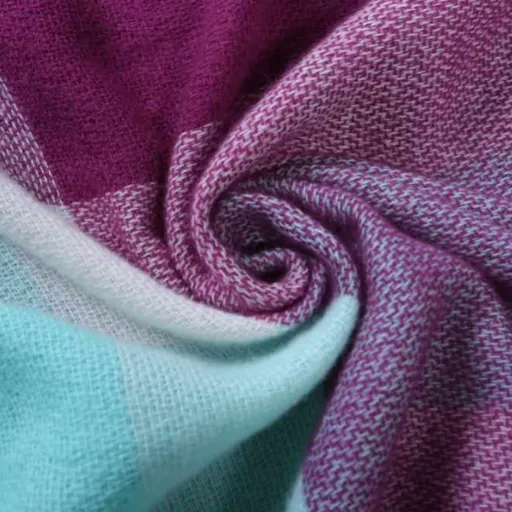
Versatile, strong, and cheap, polyester and acrylic are the most popular fabrics among manufacturers and consumers.
The very properties of polyester, such as being lightweight, anti-wrinkling, and moisture-absorbing, make it an ideal candidate for sportswear, outdoor clothing, and everyday apparel. It is also very popular in interior decor, where its application includes curtains, upholstery, and bedding. Besides these, it is used in the industrial sector for manufacturing ropes, conveyor belts, and filters.
Acrylic, on the contrary, attracts people for its wool-like softness and finds its way into the wardrobe through sweaters, scarves, blankets, and other knitwear. Besides this, it is a commonly accepted fabric in home décor, particularly for carpets and upholstery. Its UV and weather resistance also make it suitable for outdoor items like awnings and patio furniture coverings.
Once you know the details of these fabric types, it becomes easier to recognize their perfect use in different industries and places.
Typical Uses of Acrylic Fabrics
Acrylic fabrics are preferred in numerous arenas owing to their versatility and durability. Besides, the fashion industry does use them a lot, and these fabrics end up in sweaters, mittens, and socks because they have a soft texture and are warm. Also, they are light and water-resistant, making them a must-have for outdoor products like tents, tarps, and boat covers. Household items also use a share of the acrylic materials, with applications in upholstery, rugs, and curtains that can withstand daily wear and remain strong. Plus, the fabric’s resistance to color fading and damage from UV rays increases its usage in making outdoor furniture, awnings, and sunshades. Knowing these practical applications gives us an idea of how critical acrylic fabrics are to the modern world of manufacturing and lifestyle products.
Typical Applications for Polyester Fabrics
Polyester fabrics are highly versatile and have found their way into various industries, all for the same reasons: durability, affordability, and adaptability. One significant area of application is the fashion and apparel industry, where polyester fabrics are the primary materials for making activewear, jackets, and casual wear due to their lightweight and wrinkle-resistant features. Additionally, the fabric remains in demand for making curtains, beddings, and upholstery because it does not shrink or fade, which would otherwise lead to a loss of quality over time. The same fabrics are also important in industrial material production, which includes conveyor belts and hoses, among others, due to their high tensile strength. In addition, polyester is selected for outdoor products like tents, backpacks, and flags as it stands up to weather and UV damage. The variety of applications illustrates the importance of polyester not just in everyday consumer products, but also in specialized industry solutions.
Environmental Impact
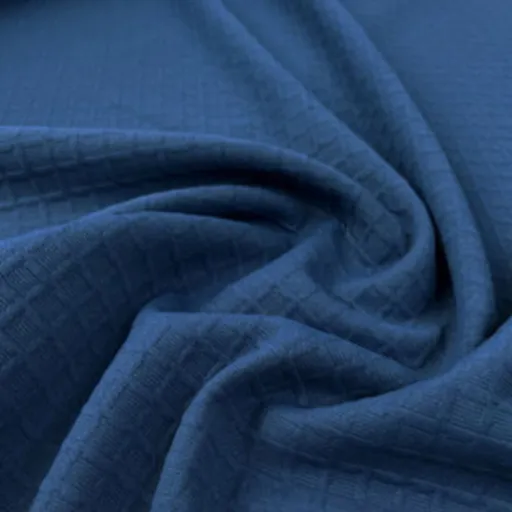
Polyester and acrylic are two synthetic fibres with considerable environmental impact, mainly because of their manufacturing processes. They come from petroleum, a non-renewable source, which means that carbon is emitted during the extraction and production of the fibers. Besides, polyester and acrylic fabrics are known to release microplastics into the water during washing, posing a danger to ocean ecosystems. They are also non-biodegradable, so they will remain in landfills for decades, worsening the long-term waste problem. The situation is being improved through the use of recycled polyester and the invention of biodegradable synthetic materials, but these solutions have not been widely accepted yet.
Sustainability Concerns for Acrylic and Polyester
The latest studies indicate that microplastics released from the washing of synthetic outfits have become a major ecological problem. It has been revealed that a single wash can introduce millions of fibers into the wastewater system, many of which are not fully captured by sewage treatment plants. Microplastics that do not get the chance of being treated go straight to the ocean, where they eventually are eaten by fish. Not only does this continue to upset the underwater ecosystem, but it also creates a human health risk through the food chain. Several methods are being used to combat this problem, including filters in washing machines, specialized laundry bags designed to trap microfibers, and the ongoing pursuit of fabric technology to reduce shedding.
Microplastic Pollution and Fabric Production
One of the significant sources of microplastic pollution is fabric production, with synthetic fibers such as polyester, nylon, and acrylic losing minuscule plastic particles during washing. The usual filtering systems do not retain these microplastics, and thus, they are the cause of one of the main environmental issues of our time. Recent studies show that textile manufacturers are searching for new ways to minimize this negative impact, and they are not shy about it. The latest solutions include developing biodegradable synthetic fibers, enhancing wastewater filtration technologies, and adopting circular manufacturing methods that do not produce waste. At the same time, consumers’ behavior can be a decisive factor if they choose sustainable materials, wash their clothes in cold water, and wear them longer between washes. The combination of industrial progress and eco-friendly practices can lead to a significant reduction in microplastic pollution.
Practical Advice
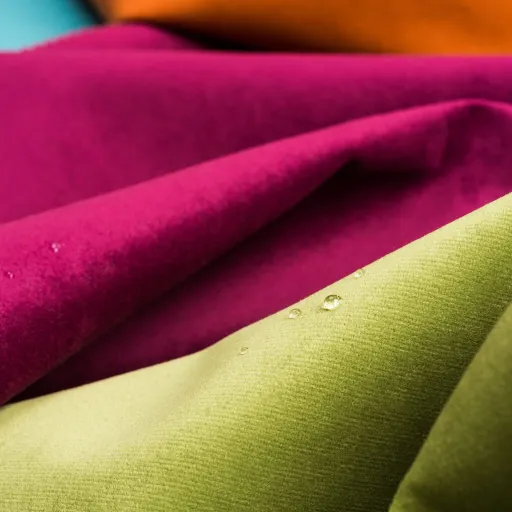
To reduce the environmental impact of polyester and acrylic clothes, one should try to implement the following practical steps:
- Wash Less Frequently: Washing these clothes less frequently will cause fewer microfibers to be released into the water systems.
- Use a Microfiber Filter: To catch microfibers while washing, install a filter in the washing machine or use a microfiber trapping laundry bag.
- Opt for Cold Washes: Wash with cold water on a gentle cycle to limit fiber shedding.
- Avoid Overloading the Washer: Overloading creates more friction, which results in more microfibers being released.
- Air Dry When Possible: Tumble drying may weaken the fibers, causing them to shed more. Air drying is less harsh and consumes less energy.
Choosing Between Acrylic and Polyester
Acrylic and polyester are pretty different, but understanding their properties and the pros and cons can play an essential role in your selection. Acrylic is a synthetic fabric that is very light, soft like wool, and has excellent heat retention. That is why it is one of the favorite materials for making winter coats and knitwear. Besides, it does not turn yellow from the sun and retains its shape through washing and wearing, but it significantly loses its beauty from pilling and frequent use. The other hand is aged and has the thumb of endurance, moisture, hydration, and stretching/shrinking resistance. This one here is the biggest application in the activewear and outdoor gear production. But the rags on this fabric could be less breathable at times and, over time, could become smell traps. In the end, the determination of the fabric’s usage is the main factor—acrylic might be a good choice for plush, insulating clothes. At the same time, polyester excels in handling wear and tear, especially for active or outdoor purposes.
Care Tips for Acrylic and Polyester Fabrics
Both acrylic and polyester fabrics can last longer and keep their appearance and performance beyond their normal range if they are correctly cared for. It is better to wash acrylic fabrics in warm or cold water with a gentle cycle to avoid stretching or pilling. Do not dry at high temperatures; acrylic is sensitive to heat; instead, use air-drying or a low-heat tumble dry. For polyester, it is best to wash with lukewarm water and use a mild detergent to keep its colors and strength. Although polyester is less susceptible to wrinkles and shrinking, still avoid excessive heat during drying or ironing. Moreover, turning garments inside out before washing can help reduce wear and tear, especially for items prone to friction or fading. Both fabrics benefit from periodic hand washing for delicate items, which in turn will ensure longevity.
Sustainability Tips
Sustainability is a significant factor for me, and I always try to extend the life of my clothes and cut down on waste. I pick the fabrics that are high quality and last the longest, fix things when I can, and either give away or change clothes that I no longer wear. I also reduce energy consumption by washing in cold water, using eco-friendly detergents, and line drying my clothes; these are some of the small measures I take. Moreover, I practice conscious purchasing by avoiding fast fashion and choosing brands with eco-friendly practices, which helps reduce my environmental impact.
Reference Sources
Below are five highly trustworthy and authoritative reference sources that you might want to take advantage of in verifying the article’s correctness regarding the differences between polyester and acrylic:
- Understand Your Fibers | Textiles
This document, coming from the University of Georgia, provides thorough knowledge of polyester and other fibers, along with their various properties and applications. - Ultimate Fabric Types Chart: Essential Guide to Textile Knowledge
This is an all-in-one guide by Salem State University that provides information about acrylic and polyester, including their traits and uses. - Clothing Capers Study Guide
A study guide presented by Washington State University Extension that covers polyester and other synthetic fibers, emphasizing their maintenance and characteristics. - Fibers and Fabrics
An overview document prepared by Oregon State University that includes a description of man-made fibers such as polyester and acrylic, along with their strength and use. - Mid-infrared Emissivity of Nylon, Cotton, Acrylic, and Polyester Fabrics
A paper that goes into a discussion of the physical properties of polyester and acrylic fabrics, such as moisture absorption and emissivity, just to name a few.
Frequently Asked Questions (FAQs)
What is the difference between acrylic and polyester fibers?
Acrylic and polyester fibers have distinct properties that affect their use in clothing and textiles. Acrylic is made from acrylonitrile and is softer, providing a comfortable feel against the skin. Polyester, on the other hand, is derived from polyethylene terephthalate and is known for its durability and resistance to wrinkles. While acrylic offers warmth and a lightweight feel, polyester is more durable and better suited for long-lasting wear.
Which material is better to wear in summer: acrylic or polyester?
When it comes to summer clothing, polyester is generally preferred because it is breathable and has better moisture-wicking properties compared to acrylic. Wearing polyester can help keep you cool and comfortable, whereas a thick acrylic shirt may cause discomfort due to its insulating properties. However, lighter acrylic garments can also work if they are made with breathable weaves.
Is acrylic considered a synthetic fiber?
Yes, acrylic is considered a synthetic fiber, as it is derived from petroleum-based products. It is made from acrylic acid and is designed to mimic the feel of natural fibers like wool. Polyester is another synthetic fiber that is known for its durability and versatility in various garments.
What are the advantages of polyester production?
Polyester production has several advantages, including its cost-effectiveness and the ability to enhance the performance of fabrics. Polyester is resistant to shrinking and stretching, making it an ideal choice for activewear and everyday clothing. Additionally, polyester can be blended with natural fibers like cotton to improve comfort and breathability.
How do acrylic and polyester fabrics compare in terms of comfort?
Acrylic is often softer and more comfortable to wear than polyester, especially when it comes to close-fitting garments. However, polyester is more durable and resistant to wear and tear, making it a better choice for items that require longevity. Ultimately, the choice between the two may depend on personal preference and the intended use of the fabric.
Can I wear acrylic or polyester in colder weather?
Both acrylic and polyester can be suitable for colder weather, but they serve different purposes. Acrylic is often used in sweaters and knitwear because of its warmth, while polyester is commonly found in insulated jackets and outdoor gear. A thick acrylic shirt can provide warmth, while polyester’s moisture-wicking properties help keep you dry during physical activities.
Which is easier to care for: acrylic or polyester?
Both acrylic and polyester are easy to care for, but polyester has an edge due to its resistance to wrinkles and the need for less frequent washing. Acrylic may require more careful handling to maintain its softness and shape. Washing both fabrics in cold water and avoiding high heat in drying can extend their lifespan.
What is the best fabric for outdoor activities: acrylic or polyester?
For outdoor activities, polyester is generally considered the better option due to its moisture-wicking capabilities and durability. Polyester fabrics can effectively manage sweat and keep you dry, while acrylic may cause discomfort if it traps moisture. Choosing the right fabric for outdoor wear can significantly enhance your comfort and performance.
How do the properties of acrylic and polyester affect their use in clothing?
The properties of acrylic and polyester significantly influence their use in clothing. Acrylic is lightweight and warm, making it ideal for cozy garments, while polyester is resilient and versatile, often used in activewear and everyday clothing. Understanding the differences between acrylic and polyester can help consumers choose the best fabric for their needs.








